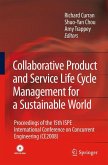The purpose behind Computer Models in Environmental Planning is to provide a practical and applied guide to the use of these models in environmental planning and environmental impact analysis. Models concerning water quality, air quality, stormwater runoff, land capabil ity evaluationfland information systems, and hazardous waste dis posal are reviewed and critiqued. I have tried to emphasize the practical problems with data, computer capabilities, and other analyt ical questions that must be faced by the practitioner attempting to use these models. Thus, I do not delve too deeply into the theoretical underpinnings of the models, referring the reader instead to specialized references in this area. For each environmental area, I review the major models and methods, comparing their assumptions, ease of use, and other characteristics. Practical examples illustrate the benefits and problems of using each model. Computer models are increasingly being used by planning and engineering professionals for locating and planning public works, and industrial, commercial, and residential projects, while evaluating their environmental impacts. The requirements of the National Environ mental Policy Act and related state laws as well as separate state and federal laws concerning air and water quality, stormwater runoff, land use, and hazardous waste disposal have made the use of these methods mandatory in many circumstances. Yet, explanations of both the benefits and problems associated with supposedly easy-to-use com puter versions of these models and methods remain, at best, difficult to retrieve and, at worst, incomplete.








